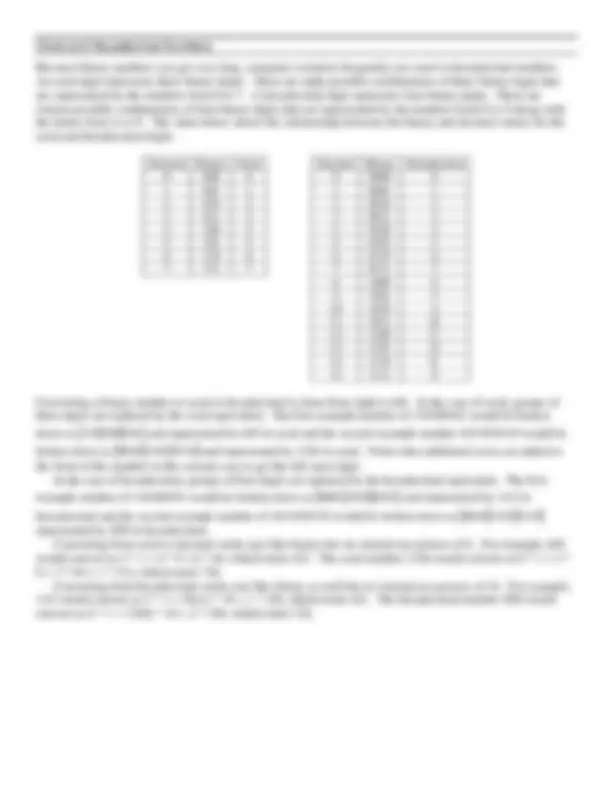



Study with the several resources on Docsity

Earn points by helping other students or get them with a premium plan


Prepare for your exams
Study with the several resources on Docsity

Earn points to download
Earn points by helping other students or get them with a premium plan
Community
Ask the community for help and clear up your study doubts
Discover the best universities in your country according to Docsity users
Free resources
Download our free guides on studying techniques, anxiety management strategies, and thesis advice from Docsity tutors
An introduction to decimal and binary number systems, explaining how to convert binary numbers to decimal and vice versa. It also covers octal and hexadecimal numbers and their relationships with binary and decimal systems.
Typology: Study notes
1 / 3

This page cannot be seen from the preview
Don't miss anything!


1
2
3
Previous total * 2 + digit new total 0 * 2 + 1 1 1 * 2 + 1 3 3 * 2 + 0 6 6 * 2 + 1 13 13 * 2 + 0 26 26 * 2 + 0 52 52 * 2 + 1 105 105 * 2 + 0 210 210 * 2 + 1 421
Previous total * 2 + digit new total 0 * 2 + 1 1 1 * 2 + 0 2 2 * 2 + 1 5 5 * 2 + 1 11 11 * 2 + 0 22 22 * 2 + 1 45 45 * 2 + 0 90 90 * 2 + 1 181 181 * 2 + 1 363 363 * 2 + 0 726
Number / 2 Result Remainder 421 / 2 210 1 210 / 2 105 0 105 / 2 52 1 52 / 2 26 0 26 / 2 13 0 13 / 2 6 1 6 / 2 3 0 3 / 2 1 1 1 / 2 0 1
Number / 2 Result Remainder 726 / 2 363 0 363 / 2 181 1 181 / 2 90 1 90 / 2 45 0 45 / 2 22 1 22 / 2 11 0 11 / 2 5 1 5 / 2 2 1 2 / 2 1 0 1 / 2 0 1